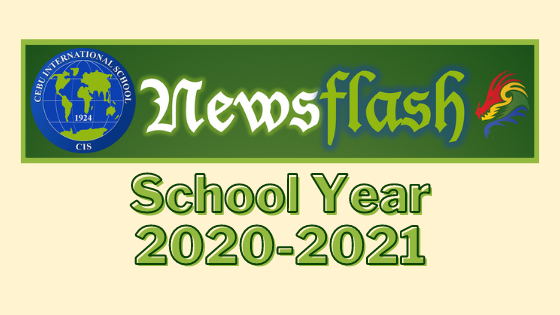
Admin News
Dear CIS Community,
It has been great to have students return after their October end-of-term holiday and immediately get back to focusing on their learning activities. Please remember to take the time to discuss with your child how they are progressing with their learning, and how they feel about it. For example, you could celebrate their achievements, listen to areas they show an interest in, and discuss areas they might be struggling with. You do not necessarily have to teach them or resolve these issues, just show interest, and suggestions on how they could resolve the areas themselves! If you have any questions or concerns, please do share these with their teacher at any time. Your interest in their learning has been shown through research to have a positive impact on your child’s performance!

A big THANKS to all CIS Corporation members who made time to join our Corporation Meeting (AGM) last Tuesday. We are pleased to welcome Ms. Jill Figueroa onto the CIS Board of Trustees for the coming year, replacing Mr. Marcelino Ugarte, who is leaving after six years of valuable service to the school. I am sincere when I share with you that CIS is fortunate to have such a dedicated, focused, and forward-looking Board, who volunteer their time willingly to govern and support learning at CIS.
I will send community members more details via an Infobrief to your registered email shortly. Enjoy your weekend!
Dr. Gwyn Underwood
Superintendent
International Day
International Day is coming soon to you virtually on Saturday, October 24, 2020!
Elementary News
by Ms. Maureen Juanson, EY 2/3 Homeroom Teacher, PYP Coordinator, Accreditation Officer
Dear Elementary Community,
As we welcomed our learners back to our virtual classrooms this week to begin quarter two of the school year, a lot of wonderful stories of students engaging in their learning have also been shared during my collaboration meetings with our PYP teachers.
- At the end of their PE class, two of our EY 2/3 learners asked their teacher if they could do the dance one more time because they really liked it. Even though there was only a minute left before the end of class, their teacher happily obliged and played the song again to let them dance to the music. At the end of the class, the students commented how much they had fun and enjoyed the class.
- After receiving instructions on how to create leaf mobiles for Culture Week, one of our first graders decided to create one a week early. With support from her parents, she was able to find alternative materials to make her own version of the mobile. With enthusiasm, she sent a photo of her work and proudly shared it with her teacher.
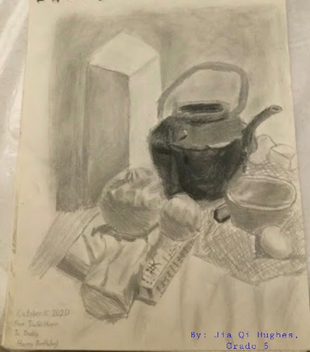 During music class, our second graders explored connections between dynamic levels and familiar things. They associated loud dynamics with things such as elephants and loud trucks, and soft dynamics with mice and small fish. The class was very much engaged in the discussion which led to a lot of wonderings. A number of them eagerly asked questions and didn’t even notice that it was already time to end their synchronous call, while their teacher willingly listened and responded to them. Even after the call, some students continued to seek for answers by messaging their teacher on Google Hangouts.
During music class, our second graders explored connections between dynamic levels and familiar things. They associated loud dynamics with things such as elephants and loud trucks, and soft dynamics with mice and small fish. The class was very much engaged in the discussion which led to a lot of wonderings. A number of them eagerly asked questions and didn’t even notice that it was already time to end their synchronous call, while their teacher willingly listened and responded to them. Even after the call, some students continued to seek for answers by messaging their teacher on Google Hangouts.- One of our fifth graders pursued her interest to create sketches of still life at her own time. She sent some examples of her work to her art teacher and asked if she could have extra lessons with her to learn more about sketching and improve her skills. Upon receiving this message, her teacher decided to make adjustments to her plan for their next lesson in order to cater and support her student’s interest.
 These are just some snippets of how our CIS learners continue to demonstrate agency during this period of remote learning. Amidst all the challenges of this new way of learning and lack of face-to-face interaction with their teachers and peers, our students continue to engage meaningfully in their learning, take risks, have inquiring minds, take ownership of their learning, and contribute not only to their social, emotional, and cognitive growth, but also of others. These stories also highlight the vital role of parents and teachers in supporting and nurturing learner agency. Your willingness to listen and respond while students make choices empower them to pursue their interests and wonderings, and become independent learners.
These are just some snippets of how our CIS learners continue to demonstrate agency during this period of remote learning. Amidst all the challenges of this new way of learning and lack of face-to-face interaction with their teachers and peers, our students continue to engage meaningfully in their learning, take risks, have inquiring minds, take ownership of their learning, and contribute not only to their social, emotional, and cognitive growth, but also of others. These stories also highlight the vital role of parents and teachers in supporting and nurturing learner agency. Your willingness to listen and respond while students make choices empower them to pursue their interests and wonderings, and become independent learners.
It is encouraging to see how we, as a learning community, are able to realize our commitment to develop the unique potential of our students and become agentic learners by creating a supportive, nurturing, and collaborative environment. These are the stories that inspire us and define the purpose of why we continue to seek ways to navigate these changing times.
Remote Learning in Art
by Ms. Thea Raagas, Elementary Art Teacher
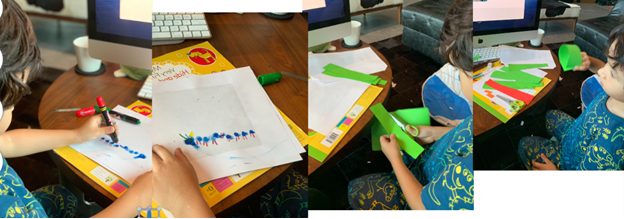
Ezra shared his process of creating his artwork. On the two photos on the left, he is shown painting and coloring the Very Hungry Caterpillar, (a story that the students tackled in their Homeroom Class), on the two photos on the right, he cuts strips of paper to create a Paper Chain Craft of the Very Hungry Caterpillar. Voice, Choice and Agency are practiced in ART Class by giving the students options on which craft or type of artwork they would like to produce on that day. In this class they got to choose between Finger Painting, Paperchain Craft and Finger Puppet-making.
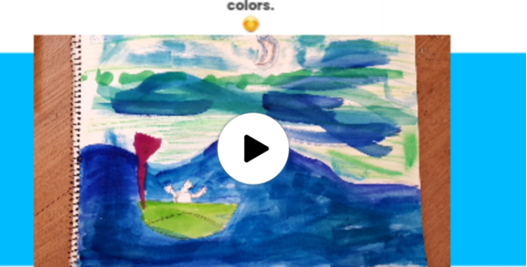
This is Yeosan’s (KG1) Cool Colors Landscape. We are discussing Cool Colors as well as Drawing Landscapes in KG1 Art Class. I Yeosan’s audio comment he says, “This is the sky, the sea, and these are cool colors. This is not a red flag, it is purple or violet, and that man in the boat is me”. His work shows that students are not only taught painting skills but they are also encouraged to think about their work and share these thoughts with others. This fosters communication and thinking skills in the students. They are asked to explain their work by taking a video of themselves and posting this on Seesaw.
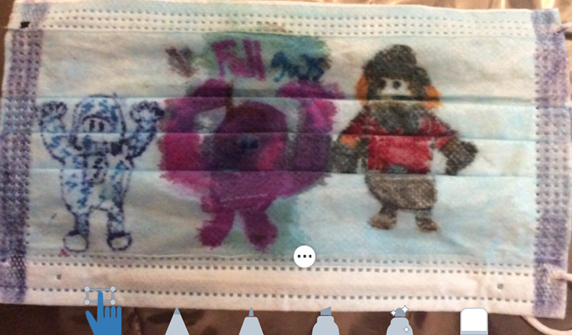
Edgar of Grade 3 has put a lot of detail into this Covid Mask Design. He has drawn three figures on his mask using Colored Markers, and has colored these very well. The effort that he has put into this work is admirable. Keep up the good work Edgar!
CIS Culture Week and International Day
Next week, during Culture week, students will be exploring various continents through a series of Games, Art activities, Cooking, Dancing and Virtual tours. For South America, Ms Lyn and Ms Thea have asked the students to prepare leaves, branches and other available materials to create a Mobile in the style of the Art of Alexander Calder. Fiona surprised us with an early submission of the activity. In these photos, she proudly holds up her mobiles for Culture Week. She created them using recycled bottles and colored papers as her material.
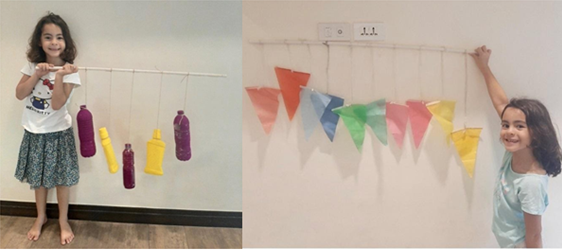
Grade 3
In grade 3, we have been practicing the use of prepositions and demonstrating them with our favorite toys.

We are also practicing to describe our physical environment by creating informative maps of our surroundings. These maps will then be used to write preposition sentences to describe our surroundings.
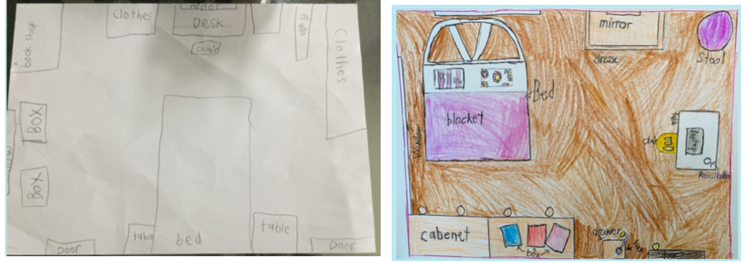
The students also explored their physical surroundings by going on a virtual field trip. We flew to the edge of space, recorded our thoughts and described what we saw through pictures and drawings.
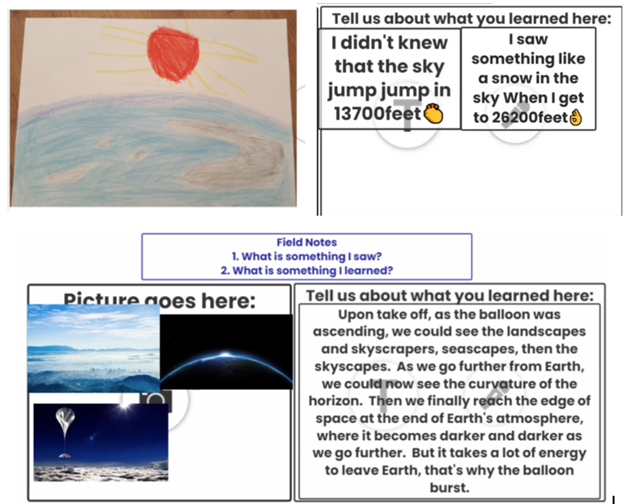
Middle and High School News
by Mr. Dale Wood, Middle and High School News
Diploma Programme (DP) gets the year started
During the month of September each year, our grade 11 and 12 students, families, and teachers come together for an evening (for each grade) to introduce the year ahead and review the IB Diploma Program for students in those grades.
This year we have held these meetings virtually- the 11th graders in the middle of the month, and the 12th graders at the end. The goal for these meetings is primarily to introduce our courses to the students and their families, as well as preview the year in each course. For the grade 11 students this meeting comes at the beginning of their IBDP journey. For the grade 12 students it occurs as the students and their families are preparing to make their IB Decisions for the year.
Each year, we also make a visual commitment to the IBDP values with students and teachers signing a tarp that will hang in the Media Center for the rest of the year. This year we are doing these signatures digitally, and the tarp will be printed and displayed as soon as we are able to do so.
Please feel free to check out our DP Program through this link:

MHS Science in the Remote Learning Classroom
A few weeks ago we focused intentionally on our Design classes in MYP and on how we are using remote learning instruction and technology tools to lead our students to understand and implement the design cycle across the curriculum.
This week we would like to highlight some of the exciting things that are occurring in our Science Department. One of the most exciting aspects within a student-centered science class is watching students experiment and learn from the eureka moments that emerge organically from these engagements. So much of science, especially for us, is to lead students to learn by actually doing, and in science this means exploring through conducting labs and experiments. The question that we may spring to mind, then, is: How can we replicate these moments remotely; that is, how can we do science when we don’t have access to a science lab or to lab equipment?
Our teachers have been using a creative array of video, simulations, interactive apps, and virtual labs to help bring the science classroom alive for students while they are at home. We will be sharing a number of these experiences below to give you an idea of how our science classrooms continue to be active, engaging spaces even when we are not able to physically gather together in our science labs.
Grade 7 Science
Students have been led virtually through a tutorial on how to safely use the bunsen burner using Edpuzzle. They begin with a video which pauses intermittently to check for understanding so that students are able to master the steps to using a Bunsen burner safely, The students engaged in a Bunsen Burner Experiment which was conducted virtually, where they can see the relationship between the amount of air entering into the airhole (by adjusting the collar) and the color of the flame produced by the bunsen burner. A yellow flame ”safe flame” is produced when the collar is closed, preventing air to mix with the gas whilst “blue flame” is produced when air is sufficient. This virtual training will help students once we are physically on campus and using this equipment.
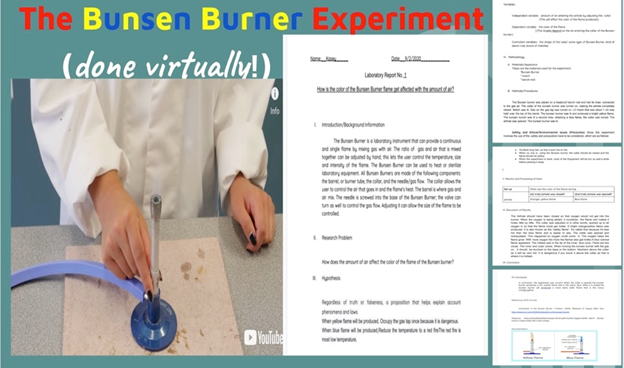
Science 8:
This class has been working on a formative task on the important idea of Conducting Scientific Investigations. Unit 1 in Science 8 focuses on exploring the use of the scientific method in real-world applications. Part of their formative tasks has been to conduct individual scientific investigations on natural phenomena. This simulation has allowed students to investigate the effect of altitude on the boiling point of water and relate the role of atmospheric pressure in the boiling process. They used a correct design in their experiment to establish the relationship between the independent and dependent variables.
How does altitude affect the boiling point of water?
https://interactives.ck12.org/simulations/chemistry/boiling-point/app/index.html
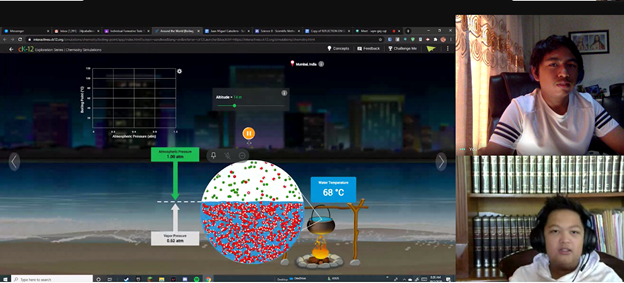 Another formative task related to conducting scientific investigation involved collaborating with a partner. This task guided students to investigate the effect of minerals on the growth of plants. The students were challenged to use critical thinking skills as they developed a correct experimental design. They considered the independent and dependent variables, controlled variables, and the control and experimental setups.
Another formative task related to conducting scientific investigation involved collaborating with a partner. This task guided students to investigate the effect of minerals on the growth of plants. The students were challenged to use critical thinking skills as they developed a correct experimental design. They considered the independent and dependent variables, controlled variables, and the control and experimental setups.
How do minerals affect the growth of plants?
Chemistry 10:
Formative task: Atom Builder Challenge
Unit 1 of Chemistry 10 emphasizes how atomic structure affects different elements’ properties, uses, and how these elements are arranged in the periodic table. This simulation challenged the students to specify the number of subatomic particles in each of the missing elements by identifying and interpreting patterns in the atomic structures of other elements.
Can you build the atoms of the missing elements?
https://interactives.ck12.org/simulations/chemistry/atom-builder/app/index.html

DP Chemistry 11
Home-based lab: Measurement and Data Processing
Taking accurate and precise measurements with proper consideration of absolute uncertainties is a basic skill in conducting scientific investigations. In this unit, the students learned that all measurement has a limit of precision and accuracy. This limitation must be taken into account when reporting and processing data as well when evaluating experimental results. In this simple home-based lab, they are tasked to determine the volume of a box. They considered proper reporting of data as well as propagation of errors in calculated results.
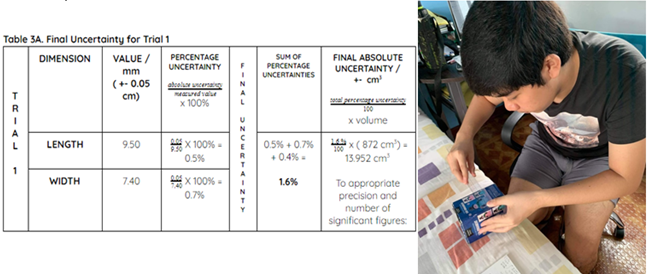
Simulation: Absorption and emission line spectrum
The unit on atomic structure involves the analysis on why the atoms of different elements give out light of a distinctive color when an electric discharge is passed through their vapors. The absorption and emission line spectra of different elements provide valuable information regarding their atomic structure and identity. This simulation allowed the students to investigate how the frequency and wavelength of a transmitted or absorbed radiation are related to the energy levels of atoms of elements.
How do we know what the stars are made of?
https://interactives.ck12.org/simulations/physics/atomic-colors/app/index.html
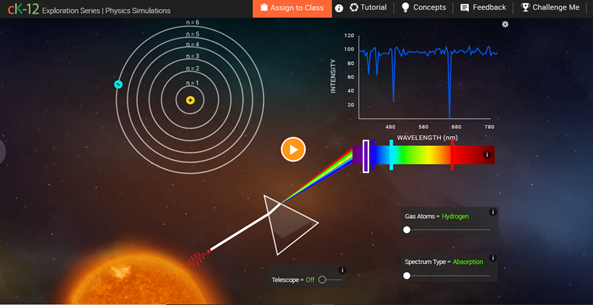
DP Chemistry 12
Our unit on Equilibrium introduces the different applications of Le Chatelier’s Principle in daily life. This principle states that if a system in a dynamic equilibrium is disturbed by altering the conditions, the position of equilibrium moves to counteract the change. This simulation involves keeping CO2 gas in a solution which is a delicate process to produce carbonated drinks. The students are able to investigate how changes in pressure, volume, and the amount of CO2, and temperature affect the position of equilibrium and the quality of the soda produced.
Why does soda go flat?
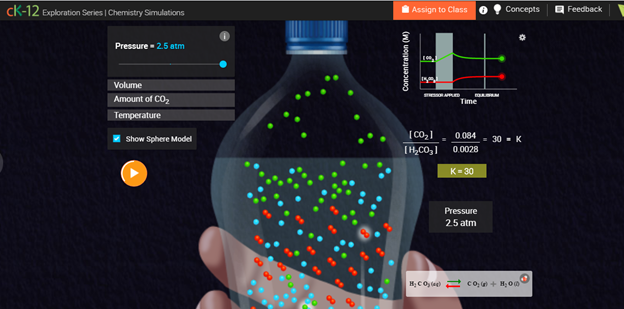
Our students developed their skills in the unit on Acids and Bases by designing an experiment distinguishing between strong and weak acids or strong and weak bases. This simulation allowed the students to set the conditions within their own experiments and develop a methodology to distinguish acids and bases according to their strength.
 http://phet.colorado.edu/sims/html/acid-base-solutions/latest/acid-base-solutions_en.html
http://phet.colorado.edu/sims/html/acid-base-solutions/latest/acid-base-solutions_en.html
Grade 10 MYP Biology
The unit on the study of DNA and Genetics concluded in the sub-unit, “Forensic Science”. One of the activities was for them to learn the technique of lifting fingerprints.
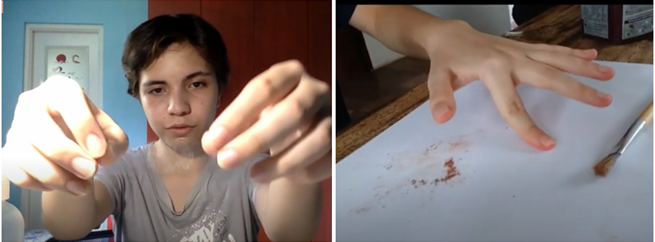
Grade 11 Biology
Students studied the concept of osmosis in unit 1. This virtual lab involves different concentrations of solutions that could be manipulated both inside the cell and in the immediate environment of the cell. It also allows the students to hypothesize the direction of the movement of water molecules and verify whether or not their hypothesis was validated.
 http://www.phschool.com/science/biology_place/labbench/lab1/types.html
http://www.phschool.com/science/biology_place/labbench/lab1/types.html
Grade 12 DP Biology
Students performed an investigation on the rate of respiration in germinating seeds. Here, the choice of variables were limited, yet it was a great tool for them to compare the amount of oxygen consumption by germinating pea seeds along with non-germinating seeds with a control group of glass beads. Students were able to develop a deeper understanding of the importance of having a control group for their experiments.
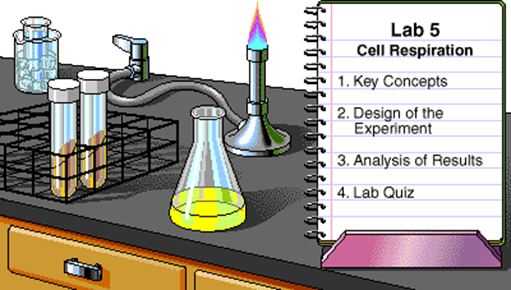 http://www.phschool.com/science/biology_place/labbench/lab5/intro.html
http://www.phschool.com/science/biology_place/labbench/lab5/intro.html
Grade 10 Students Take the Lead with Social and Emotional Learning in Homeroom Collaborations
In the midst of our current pandemic, the entire student body has had to learn remotely, resulting in fewer interactions with our peers. To bring back the joy everyone wishes to experience, the grade 10 students have set up collaborative circles across MYP grade levels with different activities that would best suit their interests. We had a range of interesting activities such as Netflix, Cooking, Basketball, Gaming, Music, and Kpop/Kdrama. Through this experience, the grade 10 students were put in their teacher’s shoes as they were the ones asked to lead the activities. They quickly realized that being a teacher in a remote environment was not as easy as being one in a face to face environment. We now better understand how hard and awkward a remote environment can be at times for teachers. The grade 10 students would like to thank all the hardworking teachers that have been setting up lessons to teach us from work. Thank you, teachers!!!!
Netflix has really helped us to quarantine because of the various shows and movies we could choose from. Selly, Victoria, Hayun, and Joo Ha have decided to come up with ideas to talk about with people who have similar interests on Netflix. The activities consisted of bingo, scribble.io, charades, and a discussion about their favorite show they watched during quarantine, or one they are currently watching, and more! We really enjoyed talking with the younger grade levels, and although it was awkward at first, we got a laugh out of it and realized how important and fun school could be (and could have been all along) if we all came together. – Joo Ha

The beginning of the meeting was really awkward and quiet since we didn’t know each other. But, as soon as we began discussing gaming, people started to be interested and spoke out loud about their own opinions. Everyone had experiences and enjoyed gaming which made our meeting more lively. During the online class, I think interacting with different people and talking about our own opinions is a great experience. – Thomas

It was a little awkward at first since we were all not very familiar with each other. However, as we went on with the activities, some students started to speak up more. Everyone seemed to have some experience with instruments, which was great. We did activities that made us work together, such as building an instrument tier list and guessing what note was played. We also played musical charades. It was an interesting experience. – Katrina
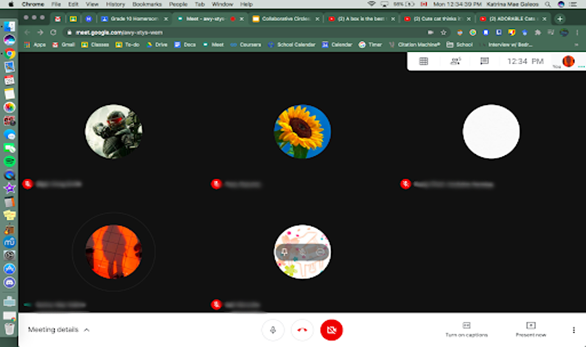
As everyone else has probably said, it was very awkward at first. In the beginning, when we went on with our introduction activities, it was hard to get everyone to participate since they must’ve been shy. Once we got to the later activities, everyone started getting comfortable and goofy. We talked about our different interests in k-pop and k-drama and even created our own k-drama storyline. It took a while, but everyone seemed to enjoy themselves. This was a great experience for us to learn what it may be like for our teachers to lead our class and I think some of us might even feel bad for our teachers now that we experienced what it might be like for them every single day. – Lea
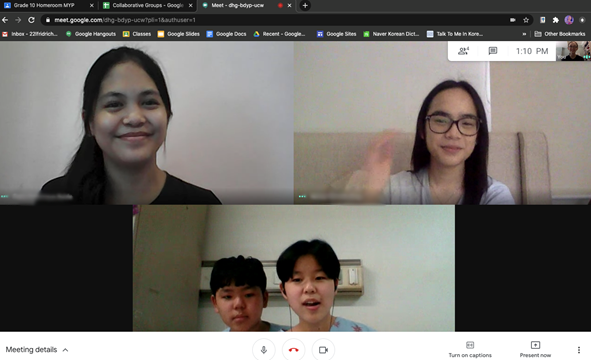
Dragon’s Print
Excerpt:
Despite being a less than ideal situation, it must be acknowledged that remote learning has its fair share of benefits that can be highly useful even when we resume traditional classes in the near future. A student shares his insights on the important takeaways we can get from “Riding the Remote Learning Wave” on http://dragonsprint.cis.edu.ph/.
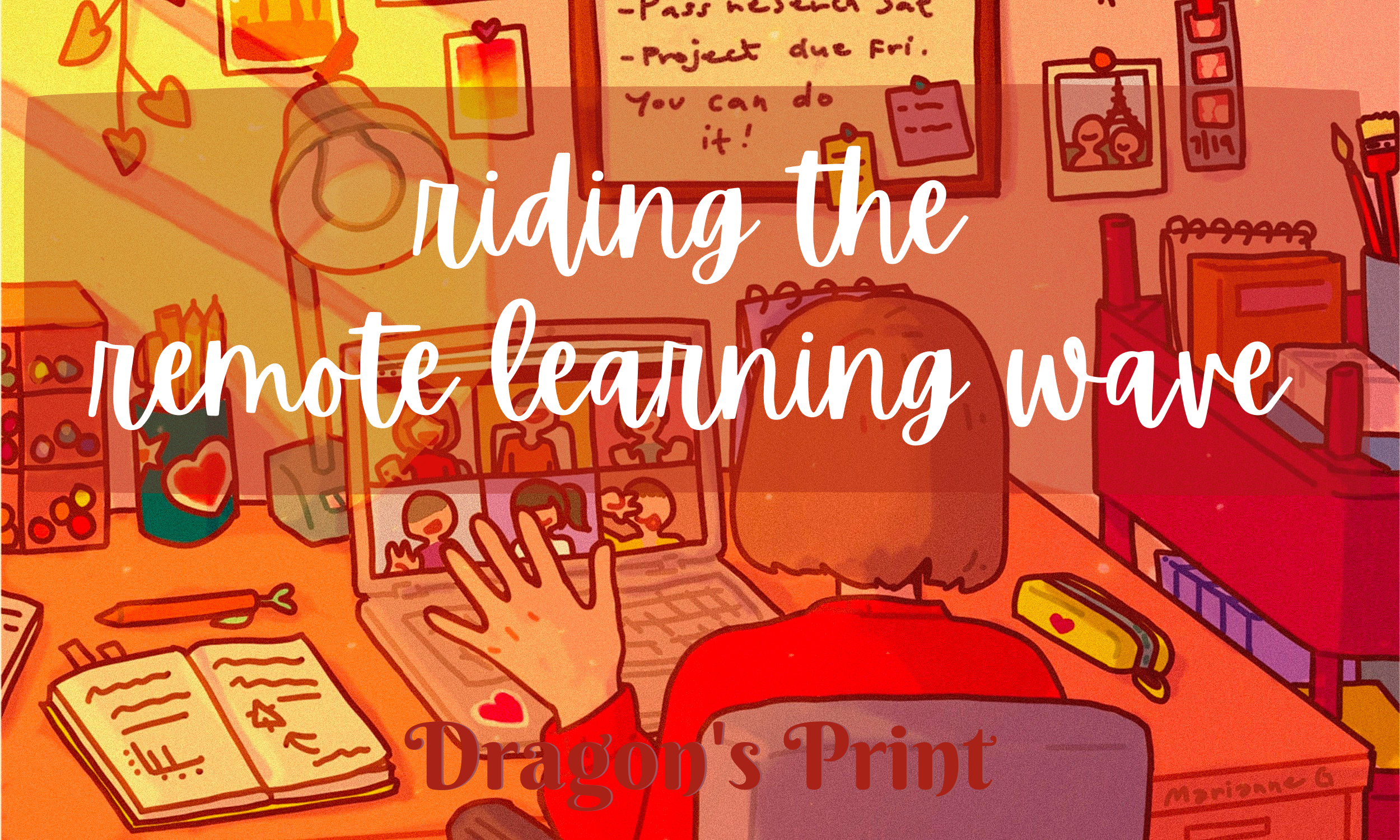
College/Careers Counselor Corner
by Ms. Jenny Basa, College/Careers Counselor
Tip for the Week:
College Essays:
If you are applying to multiple universities and the college essay prompt is similar, you may opt to reuse an essay as long as you revise it to fit the prompt and the institution you are applying to. The most important value of an essay is to demonstrate who you are. The transcripts are merely figures that show your academic potential and performance but the essay shows what kind of person you are and this could determine if you are the right fit for the university.
Upcoming Virtual Visits and Fairs: (students & parents are welcome)
Date
Until end of October
October 20
Tuesday
3:15 PM
October 21
Wednesday – 5:30 PM
October 22
Thursday
3:00 PM
October 22
Thursday – 6:00 PM
October 22
Thursday
October 23
Friday – 5:00 PM
November 13
Friday
2:00 – 5:00PM
Event
Hong Kong Polytechnic University (Hong Kong)
Register here: HK Poly (for personal consultations or faculty-specific webinars)
Alumni Visit: Evangeline Gerodias – NYUAD Class of 2020 and CIS Class of 2016
Click here to join: https://meet.google.com/vnp-jywo-mgv
Chat with a Yale NUS student
Link to join: Yale NUS student chat
Yale NUS College (Singapore)
Link to register: https://apply.yale-nus.edu.sg/register/CIS (students will receive the Zoom link upon sign-up)
Jacobs University (Germany)
Link to join: to follow
Student World Virtual Fairs
Click to see List of Universities
Link to register and join: https://fairs.thestudentworld.com/cebuis
University of St. Andrews (UK)
Link to join: to follow
Study in Japan Virtual Fair – Link to Virtual Fair: Study in Japan Fair
Participating universities: University of Tsukuba, Kyushu, University, Temple University Japan, Hiroshima University, Nagoya University of Commerce & Business, iCLA Yamanashi Gakuin University, Nagoya University and Kyoto University of Advanced Science
SAT Update
Please note that most universities have gone test-optional. This means they do not require test scores for students to be eligible for admission.
November 7 and December 5 have been cancelled by the College Board. Test-takers registered on these dates will receive an email with instructions.
| 2020-2021 Test Dates | Test | Registration Deadline |
| November 7, 2020 | CANCELLED | |
| December 5, 2020 | CANCELLED | |
| March 13, 2021 | SAT only (no Subject tests) | February 12, 2021 |
| May 8, 2021 | SAT & SAT Subject Tests | April 8, 2021 |
| June 5, 2021 | SAT & SAT Subject Tests | May 6, 2021 |
To register for the SAT, you may click on this link. If you need assistance or have any questions, please feel free to email Ms. Jenny Basa at jbasa@cis.edu.ph.



